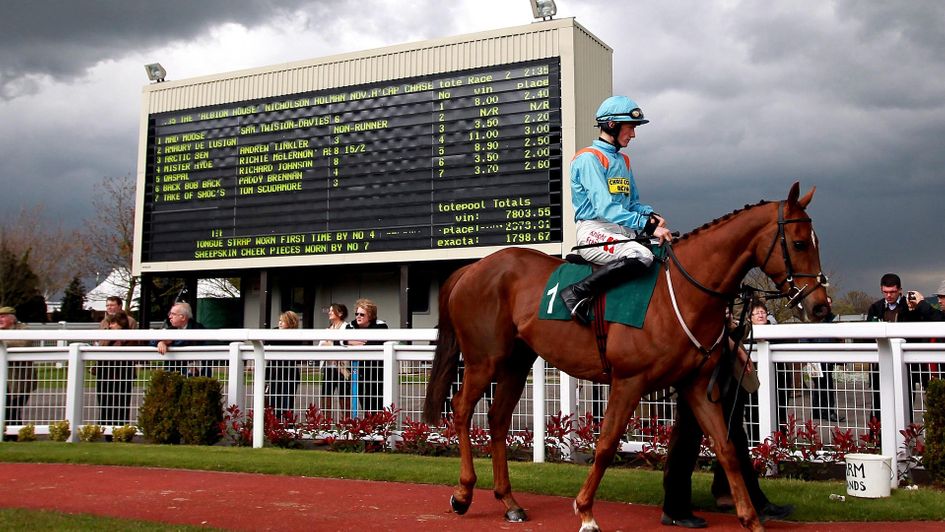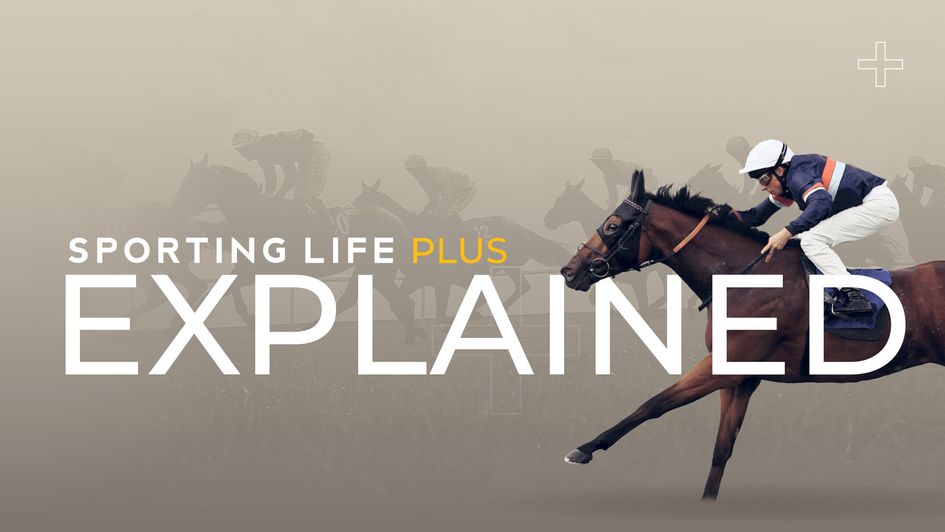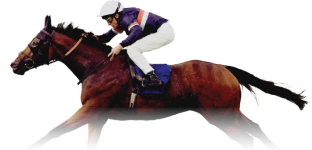Following the death of the popular Mad Moose, look back on some of racing's most quirky customers, including famous biters, refusers and the wayward.
Some of the commentaries in the early editions of Timeform's ‘Racehorses’ annuals seem a little harsh now: ‘A well-bred “thief” who will never win again’ (Poseidonius, 1949); ‘he is a headstrong, impetuous, hard-pulling brute, as like as not to refuse to start, or run wide on the bends, or do anything else he can think of to avoid racing’ (Le Troubadour, 1949); ‘no prospects so long as his outlook remains warped’ (Prince Marco, 1947); ‘resolute only in refusing to race; can run a bit but won’t’ (G.H.Q. 1947).
Nasrullah was a very talented performer, who won the Coventry Stakes and was second in the Middle Park Stakes as a two-year-old in 1942. The following year, he was successful on three occasions, including in the Champion Stakes, but on the first of them in the Chatteris Stakes he gave a very temperamental display leaving the paddock and on the way to the start, but somehow manged to win the race, despite dropping his bit and veering away to the left. Fitted with blinkers in the 2000 Guineas, as soon as he struck the front his desire to race vanished and he finished fourth. In the Derby he was third after swerving right and ruining a couple of his rivals’ chances.
Nasrullah’s son Zucchero was another exasperating individual. In 1953, he had eight races, and in four of them he simply refused to have anything to do with the game. In the King George VI and Queen Elizabeth Stakes at Ascot, he was in a bad frame of mind, behaving badly behind the barrier (in the days before starting stalls) and when the tapes rose he stuck his toes in and wouldn’t budge until the others were well on their way. In the Prix de l’Arc de Triomphe, he jumped off with the others but quickly changed his mind, sticking his toes in after he’d gone fifty yards. However, he had one of his going days at Epsom the following year, winning the Coronation Cup. Zucchero was rated 133$ by Timeform, the joint highest-rated horse to have acquired a squiggle - a symbol that denotes unreliability.
Zucchero shares that distinction with Auriban, who won the Prix du Jockey Club in 1952 despite facing the wrong way when the tapes rose, costing him at least ten lengths. On a sweltering hot day for the Grand Prix de Paris, Auriban was ‘all of a wash and hopping mad’ after delays to the start. Fighting for his head he refused to settle in the early stages of the race until his jockey decided to let him go on in the lead. Early in the straight he made a dive for the rails which put the whole field in a heap, but despite his exertions he still managed to hold on for second, behind the two-length winner Orfeo.
Grey Sovereign, another of son of Nasrullah, was a good sprinter but he behaved abominably in three of his races in 1952. The starts for the King’s Stand Stakes at Royal Ascot and the King George Stakes at Goodwood were ruined as he lashed out and danced around as this extract from ‘Racehorses’ indicates: ‘When there is a horse like this at the gate the riders of the other horses have to divide their attention between watching the starter and keeping themselves and their mounts out of harm’s way. Not only so, but the well-behaved horses in the field are frequently upset by the mad antics of the other, and disappointed so many times by the going in and coming out again consequent upon the starter’s efforts to get the culprit away, that half of them are usually caught flat-footed when the gate eventually does go up. So, it is not surprising that the culprit gets the best of the start.’
Nowadays, standards of misbehaviour seem to pale into comparison with those of the ‘fifties. The introduction of starting stalls in Britain in 1965 has clearly played its part, and downright refusal when the stalls open is a very rare phenomenon. Percy’s Lass was a very smart performer, who won the September Stakes at Kempton in 1988, but this daughter of Laughing Girl had the last laugh on a number of occasions, notably over two jockeys who ended up having to ride their best finish just to get her out of the starting stalls. She refused to leave the stalls in the Princess of Wales’s Stakes at Newmarket and on her final outing, in the Champion Stakes, she needed the utmost persuasion to canter down before giving her opponents twenty lengths start and finishing a detached last of the five runners.
Knockroe was a very smart but enigmatic individual, whose ‘galloping companion’ was his trainer’s three-and-a-half-litre Rover as he was kept away from other horses. He gave signs of temperament in his first season as a three-year-old in 1971. He won five races that year but should have made it six when, after virtually refusing to race until halfway, he made up an enormous amount of ground before hanging badly left and finishing second (demoted to third) in the Morland Brewery Trophy at Newbury. He refused to race in the Princess of Wales’s Stakes at Newmarket the following year, but also put up some good performances to win the Jockey Club Stakes, the Yorkshire Cup, the Cumberland Lodge Stakes and the St Simon Stakes.
His temperament again threatened to get the better of him in 1973. The Weetabix Wildlife Handicap over a mile and a half at Epsom in June was to be his last as he had shown little interest in his four previous outings that year, including when virtually refusing to race on his latest appearance. Well, Knockroe certainly did show an interest, winning in impressive fashion at 20/1 and in the process breaking the thirty-seven-year-old course record previously held by Mahmoud. As with Zucchero, the turns and gradients at Epsom had rekindled the waning enthusiasm of a good horse. Knockroe followed up at Brighton later the same month, but in doing so he received a rap to a joint and he missed the next two seasons. However, he showed no interest in three races in 1976 and was retired after being injured at Redcar.
Over the jumps, punters kept their bets back until the last possible moment in races that involved Vodkatini. There was a clue to his future when he ran out at the second-last when in the lead on his debut in 1982/3, but he progressed into a high-class chaser when transferred to Josh Gifford’s stable, winning the Grand Annual Challenge Cup Handicap at Cheltenham in 1987/8. However, his temperament worsened and despite regularly being led in at the start it was always doubtful whether he would set off or not. On two of the occasions that he refused to race he was a heavily-backed favourite in the Tingle Creek Handicap (won by Desert Orchid) at Sandown and the Captain Morgan Aintree Handicap in 1988/9. He was rated $$ in his last two seasons, though, and his ability to finish a race became a rarity as his form figures portray: R4-UUPPP.
Vodkatini was in danger of being banned from racing at one stage, but one who did receive a ban was the hurdler Levaramoss. Rated 152$ at his peak, Levaramoss won the Free Handicap at Chepstow and the Salmon Spray Hurdle at Fontwell in 1977/8. However, he twice refused to race, including in the New Year’s Day Hurdle at Windsor, and even a change of stable made no difference – he was thoroughly uncooperative in all his subsequent races, including in point-to-points, and he was banned in January 1981.
Mad Moose refused to race on five occasions, his reluctance to race and being pulled up before the first in the 2013 Tingle Creek Chase at Sandown not counting among them. On his day, he was a useful performer who won six races over jumps, and even made a winning debut on the Flat at the age of nine in an attempt to rekindle his enthusiasm. That didn’t last long though and he refused to race two outings later. After the Tingle Creek, he was banned from racing, but the authorities relented to allow him back at Cheltenham a year later; he refused to race again, and that was it.
Chautauqua was a high-class sprinter in Australia, successful in three successive T. J. Smith Stakes from 2015 to 2017 and the winner of nearly A$9,000,000. He couldn’t be persuaded to start from barrier trials towards the end of his career, refusing to leave the stalls six times in a row, before connections finally gave up.
The biters
Horses attempting to bite a rival during a race are rare, but there have been some notable examples.
Marinsky, trained by Vincent O’Brien, was a very well-bred colt, who won his only race as a two-year-old in 1976. The following year he ran just four times but increased his rating to 130 after he had passed the post in first place in the July Cup at Newmarket. When second at the Curragh on his reappearance, Marinsky had hung badly left, but his behaviour was even worse in the Diomed Stakes at Epsom next time. Marinsky turned on Relkino and tried to savage him several times as Relkino attempted to push through on the inside, for which Marinsky was disqualified outright. In the process of beating Gentilhombre by a length and a half in the July Cup, Marinsky wandered left across the course. In blinkers and a muzzle, he appeared unaware of the presence of Gentilhombre and they met broadside on. Once straightened Marinsky got on top without difficulty to win going away, but the damage had been done and he was demoted to second. After the July Cup his trainer gave an undertaking not to run Marinsky again in England, but, sadly, a little more than a month later Marinsky died of a twisted gut.
Arcadian Heights twice took a bite at an opponent in 1992, firstly at Luchiroverte in the Doncaster Shield and then at Drum Taps in the Gold Cup at Royal Ascot. That both those horses went on to win their races shows no harm was done, but Arcadian Heights was ordered to wear a muzzle. Gelded at the end of that season, his racecourse manners improved to such an extent that he won the Gold Cup and the Doncaster Cup in 1994.
In the closing stages to the 1995 Prix du Cadran, Moonax had just been overtaken by Always Earnest when Moonax’s response was to have a word in his ear, or more accurately a bite at his opponent (who luckily was wearing blinkers) before the pair passed the post clear of the rest, the short-head verdict going to Always Earnest. This wasn’t the first time Moonax had displayed temperament; he had earlier broken the arm of one of the Queen’s bodyguards in the parade ring at Royal Ascot.
In a more recent incident, the French-trained filly Palomba took a bite at a rival jockey’s elbow in the listed Prix Joubert at Maisons-Lafitte in 2019. Palomba looked like landing the odds when coming with a run inside the final furlong, but instead decided to turn her attentions towards the elbow of Francois-Xavier Bertras on board the eventual winner Lucky Lycra, and Palomba went down by a neck.
#MaisonsLaffitte
— Equidia (@equidia) September 4, 2019
Dans l'emballage final du Prix Joubert, Palomba (@MaxSamGuyon / C. Laffon-Parias) a mordu le bras de François-Xavier Bertras. Grande favorite, elle finit deuxième derrière Lucky Lycra. pic.twitter.com/N6SX4N0TJv
Other incidents of horses attempting to take a bite out of a rival include Great Prospector who savaged the winner Golden Derby in the Tremont Stakes at Belmont in 1980, an incident which resulted in an Eclipse Award-winning photo; Whereshetoldmetogo who took a bite at the winner Firenze Fire in the 2018 Gallant Bob Stakes at Parx; Woodman’s Luck on Romeo Royale at Del Mar in 2012; Chilled, who managed to hang on after having a go at Zimmer near the line at Churchill Downs, also in 2012, and was inevitably demoted; Majaska who lunged at Arise Augustus when they were third and second respectively at Canterbury in New Zealand in 2016; and Anticipation in a couple of Class 2 handicaps at Sha Tin.
Anticipation raced under the name of Table Rock for Aidan O’Brien in Europe, but he took a dislike to a rival named Victory Magic, biting him in the closing stages in two separate races, firstly in November 2015 when they were second and third behind Secret Weapon and then when they occupied the same positions behind Brilliant Shine the following January. In almost all these cases the assailant was just getting the worst of the battle when the incident took place - if you can’t beat them, have a go at them!
However, a more serious incident on a racecourse concerned Ubedizzy. In the unsaddling enclosure after finishing second in the 1978 Abernant Stakes, he launched an attack on his groom, the future trainer Andrew Crook, got on top of him and bit the top off his finger. Ubedizzy’s trainer, Steve Nesbitt, gave an assurance that the horse wouldn’t race again in Britain, and Ubedizzy later ran in Ireland, Germany, France and Sweden, where he won a race the following year.
More from Sporting Life
Safer gambling
We are committed in our support of safer gambling. Recommended bets are advised to over-18s and we strongly encourage readers to wager only what they can afford to lose.
If you are concerned about your gambling, please call the National Gambling Helpline / GamCare on 0808 8020 133.
Further support and information can be found at begambleaware.org and gamblingtherapy.org.











